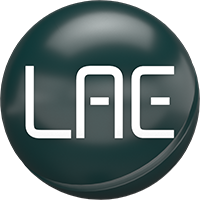If you experimented with these 2 effects for any length of time you may find yourself asking, Which should come first?
So I want to delay my reverbs or reverb my delays?
Now of course the order of applying effects can depend on your desired outcome and the specific context of the mix.
In this video, you’ll learn some ways Reverb and Delay are commonly used together to enhance your mix.
This video will have 2 sections, the first on Delay into Reverb, and the second on Reverb into Delay, with a few examples for each.
This video is brought to you by DistroKid.
Over A million artists rely on DistroKid to get their music into Spotify, Apple Music, and all the major streaming services.
DistroKid makes music distribution fun and easy with unlimited uploads and artists keep 100% of their royalties and earnings.
And DistroKid makes it easy to pay your collaborators with Splits.
DistroKid can Split earnings from any song or album and automatically send those earning to your collaborators, so that everyone involved in your project gets paid their streaming royalties.
You can add, remove or change your splits at any time and as always DistoKid never takes a cut.
Splits is a completely FREE tool available to all DistroKid artists.
So If you haven’t already you can use the link in the description to get 7% of your first years subscription with DistroKid.
Delay > Reverb
A common approach to using these effects in combination is to apply delay before reverb in the effects chain.
Here’s a few reasons why:
- Clarity and Definition: Applying delay before reverb allows the distinct echoes of the delay to be more pronounced and clear before they are blended into the reverberant space. This helps to maintain the clarity and definition of the delayed signal without it being overly washed out by the reverb.
- Rhythmic Precision: Placing delay before reverb can enhance the rhythmic precision of the delayed repetitions. By keeping the repeats cleaner and separate from the reverberation, you can achieve a more pronounced rhythmic effect with greater clarity.
- Spatial Placement: Since reverb is meant to simulate the sound reflections in a space, applying it after delay creates a more natural and immersive sonic environment. The delayed repetitions can be perceived as occurring within the reverberant space, contributing to a more cohesive and believable spatial placement of the sound.
That said, there are no hard and fast rules, and the order of effects can be adjusted based on the desired creative effect or the specific requirements of the mix.
Experimenting with different effects configurations and listening to the results can help you determine the most pleasing and suitable arrangement for your production.
Here are some reasons placing reverb before delay will sound different:
Reverb > Delay
When you use reverb before delay in an effects chain, it can result in a much different sonic character compared to the traditional order of delay before reverb.
Placing delay after reverb can cause the distinct echoes of the delay to become blended and smeared into the reverberant space.
The delayed repetitions can mix with the reverb tail, to create a sound that decays with each repeat.
This can reduce the clarity and separation of the repeats, potentially resulting in a less defined and more washed-out effect.
With this setup, the delayed repetitions tend to be perceived as coming from a more distant or deeper space within the reverberant environment.
Which can add an interesting and immersive texture because of the time-based interactions between the two effects.
The reverb tail can modulate and affect the delayed repetitions, resulting in fluctuations in the timing and tonal characteristics of the delay.
This gives you a way of adding additional movement to the delayed effect, which can be a unique texture if that’s what you’re going for.
Ultimately, the decision of whether to use delay before or after reverb depends on your specific artistic intent, the desired outcome, and the context of the mix.
It’s always recommended to experiment and listen to the results to determine what sounds best for your particular situation.
So if you liked this video let me know by subscribing to the channel and leaving a comment below, I really appreciate it.
Make sure to check out the first video in the series if you haven’t already, it goes over the difference between reverb and delay and include some more tips on mixing with effects.
Thank you so much for watching and I’ll see you in the next video!




